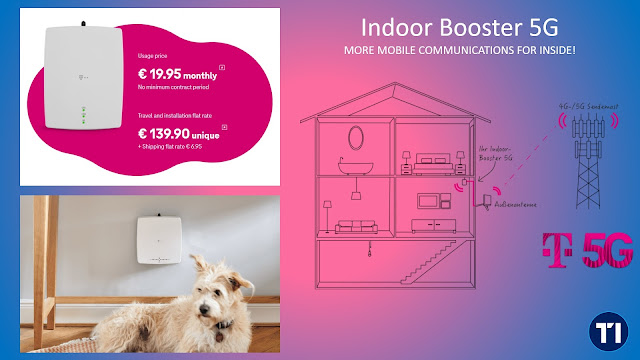Huawei's latest Active Antenna Unit, MetaAAU is billed as having loads of improvement and potential. A sponsored article on Light Reading says:
Speaking at the recent Mobile Broadband Forum event in Dubai, Yang Chaobin, president of Huawei Wireless Solution, flagged numerous technology innovations and advances that take the traditional AAU (active antenna unit) found in Massive MIMO onto another level.
MetaAAU, developed by Huawei, incorporates ELAA (extreme large antenna array) technology supporting 384 antenna elements. It’s double the number of a traditional AAU.
“By introducing 384 antennas in the AAU, coverage can be improved by 3dB on both the downlink and the uplink, and the user experience can also be improved by 30%,” said Chaobin, “Energy savings of 30% can also be achieved.”
The Official Huawei press release points out:
Released in October this year, Huawei's 64T64R MetaAAU is the ideal solution to improve both network performance and energy efficiency using innovative hardware and software. For hardware, MetaAAU introduces the extremely large antenna array (ELAA) which enables 384 antenna elements, double that of a conventional AAU (192). ELAA is combined with ultra-light integrated array and signal direct injection feeding (SDIF) to improve both coverage and integration. For software, MetaAAU utilizes the Adaptive High Resolution (AHR) Turbo algorithm to enable precise, dynamic, and targeted beamforming, significantly improving user experience and cell capacity. This hardware/software combo marks a new breakthrough in Massive MIMO coverage and energy efficiency.
In comparison with conventional 64T64R AAU and 32T32R AAU, MetaAAU improves coverage by 3 dB and 6 dB and user experience metrics by 30% and 60%, respectively. For example, in one of its flagship projects — 5G Capital that brings 5G to every corner of Beijing — China Unicom Beijing is using MetaAAU to add 30% in both uplink and downlink coverage along with 25% better experience among cell edge users.
MetaAAU is also a powerful energy-saving tool. It allows base stations to achieve the same level of coverage for cell edge users but with a lower transmit power, reducing energy consumption by approximately 30% over conventional AAUs. This has also been tested in the 5G Capital project.
With its advantages in energy efficiency and coverage, MetaAAU is slated for success. Going green is now a global objective — for example, 26 CEOs of European ICT companies have committed to combat climate change with the European Green Digital Coalition (EGDC). At the same time, 5G network coverage requirements will only continue to grow, rolling out 5G in rural and urban, outdoor and indoor contexts. Leading next-gen ICTs will be key in delivering on both demands; and Huawei's MetaAAU stands to be part of the innovation portfolio.
Going back to the Light Reading article:
If traditional materials found in antenna dipoles were applied to ELAA, for example, the weight would drastically increase, making it more difficult and expensive to install on cell sites.
Moreover, without miniaturized filters, ELAA dimensions necessarily become much bulkier compared with traditional massive MIMO antenna. Cell-site space is already constrained and operators don’t want to go through the lengthy process of gaining permission to occupy more tower space, which, in turn, increases maintenance costs.
Another challenge is that antenna elements in a traditional RF feeding network architecture are normally connected by cables, which are an inefficient way to transfer signals. If the antenna array doubles to 384 elements, the length of cable – along with the extent of inefficiencies – increases.
Through a series of hardware innovations, however, MetaAAU makes the transition to ELAA feasible and attractive. Using ultra-lite metamaterials, MetaAAU is around the same weight as the original 64T64R massive MIMO AAU. Adoption of Huawei’s compact wave filter also means MetaAAU dimensions do not require more space.
To address hardware energy inefficiencies, Huawei has adopted SDIF (signal direct injection feeding) technology. SDIF replaces cables with a more energy-efficient metal-type structure.
Aside from hardware innovation, MetaAAU introduces an adaptive high-resolution beamforming algorithm, dubbed AHR (Adaptive High Resolution) Turbo. It has various features, which, when combined, not only reduces wasted radiation energy but also cuts down on ‘noise’ that can degrade network performance.
Among the benefits of AHR Turbo is that it enables MetaAAU to generate extremely narrow beams that can precisely latch onto user equipment, as well as boost air-interface efficiencies by allowing beams to dynamically adapt to radio channel
Here is an official video of MetaAAU
Mobile World Live also has an infographic, which is the source for the image on the top. It's available here.
Related Posts:
- Telecoms Infrastructure Blog: Huawei Explains Antennas and Radomes
- Telecoms Infrastructure Blog: Huawei 5G Lampsite wins awards and speed tests
- Telecoms Infrastructure Blog: Huawei's 5G Book RRUs Start Delivering On Their Promises
- Telecoms Infrastructure Blog: Huawei RuralStar 3.0, successor of RuralStar 2.0 Lite, coming in 2020
- Telecoms Infrastructure Blog: Huawei SkySite: Drone with 5G base station & '5G Book' RRU
- Free 6G Training: Huawei talks about Beyond 5G, 5.5G and 6G
- The 3G4G Blog: Huawei's Power Digitalization 2025 Summit
- Operator Watch Blog: Eir Ireland's Flagship Huawei 5G (and 4G) Mast Configurations
- The 3G4G Blog: Energy Consumption in Mobile Networks and RAN Power Saving Schemes



